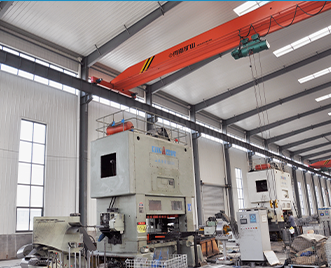Aug . 30, 2024 21:14 Back to list
how to open a submersible pump
How to Open a Submersible Pump
Submersible pumps are commonly used in various applications, including drainage, sewage, and groundwater extraction. Over time, these pumps may require maintenance or inspection, necessitating their opening. While the process may seem daunting, with the right guidance and safety precautions, you can do it efficiently. Here are the steps to open a submersible pump safely.
1. Safety First Before you begin, ensure you have the necessary safety gear. This includes gloves, goggles, and sturdy footwear. Disconnect the power supply to the pump to prevent any electrical hazards. If the pump is submerged in water, make sure the power is turned off at the breaker.
2. Remove the Pump To open the submersible pump, you first need to remove it from its housing. Depending on the installation, this could require unbolting it from a mounting bracket or lifting it out of a well or sump pit. If the pump is heavy or deep underground, consider using a crane or hoist for safety.
3. Inspect the Housing Once the pump is out, inspect its housing for any signs of damage, corrosion, or blockages. Sometimes, debris can accumulate in the housing, affecting performance. Clean the exterior with a damp cloth to remove any dirt and grime.
how to open a submersible pump

4. Open the Pump Using a suitable wrench or screwdriver, remove the bolts or screws holding the pump casing together. Carefully separate the casing to expose the internal components. Take note of how the parts fit together, as this will be crucial for reassembly.
5. Examine Internal Parts Once opened, inspect the impeller, seals, and motor. Look for wear and tear, such as cracks or debris that could hinder function. Clean any dirt buildup and replace worn-out components as needed.
6. Reassemble the Pump After maintenance, carefully reassemble the pump in the reverse order of disassembly. Ensure all seals and gaskets are properly seated to prevent leaks.
7. Test the Pump Once reassembled, return the pump to its original location and reconnect the power supply. Test the pump to ensure it operates efficiently. Monitor it for any unusual noises or performance issues.
By following these steps, you can safely open and maintain a submersible pump, ensuring its longevity and optimal performance. Regular maintenance will help prevent future breakdowns and keep your system running smoothly.
-
Submersible Water Pump: The Efficient 'Power Pioneer' of the Underwater World
NewsJul.01,2025
-
Submersible Pond Pump: The Hidden Guardian of Water Landscape Ecology
NewsJul.01,2025
-
Stainless Well Pump: A Reliable and Durable Pumping Main Force
NewsJul.01,2025
-
Stainless Steel Submersible Pump: An Efficient and Versatile Tool for Underwater Operations
NewsJul.01,2025
-
Deep Well Submersible Pump: An Efficient 'Sucker' of Groundwater Sources
NewsJul.01,2025
-
Deep Water Well Pump: An Efficient 'Sucker' of Groundwater Sources
NewsJul.01,2025
-
 Submersible Water Pump: The Efficient 'Power Pioneer' of the Underwater WorldIn the field of hydraulic equipment, the Submersible Water Pump has become the core equipment for underwater operations and water resource transportation due to its unique design and excellent performance.Detail
Submersible Water Pump: The Efficient 'Power Pioneer' of the Underwater WorldIn the field of hydraulic equipment, the Submersible Water Pump has become the core equipment for underwater operations and water resource transportation due to its unique design and excellent performance.Detail -
 Submersible Pond Pump: The Hidden Guardian of Water Landscape EcologyIn courtyard landscapes, ecological ponds, and even small-scale water conservancy projects, there is a silent yet indispensable equipment - the Submersible Pond Pump.Detail
Submersible Pond Pump: The Hidden Guardian of Water Landscape EcologyIn courtyard landscapes, ecological ponds, and even small-scale water conservancy projects, there is a silent yet indispensable equipment - the Submersible Pond Pump.Detail -
 Stainless Well Pump: A Reliable and Durable Pumping Main ForceIn the field of water resource transportation, Stainless Well Pump has become the core equipment for various pumping scenarios with its excellent performance and reliable quality.Detail
Stainless Well Pump: A Reliable and Durable Pumping Main ForceIn the field of water resource transportation, Stainless Well Pump has become the core equipment for various pumping scenarios with its excellent performance and reliable quality.Detail
